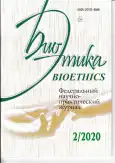Features of "relevant" changes in medical students appearance
- Authors: Hudina J.S1, Koichuev A.G1, Tutova Z.O1, Pshunov T.S1
-
Affiliations:
- Rostov State Medical University
- Issue: Vol 14, No 2 (2020)
- Pages: 46-49
- Section: Articles
- URL: https://journals.rcsi.science/2070-1586/article/view/56851
- DOI: https://doi.org/10.19163/2070-1586-2020-2(26)-46-49
- ID: 56851
Cite item
Full Text
Abstract
Keywords
Full Text
##article.viewOnOriginalSite##About the authors
J. S Hudina
Rostov State Medical University
Email: khudina_julia@mail.ru
Assistant of the Department of Psychiatry г. Ростов-на-Дону
A. G Koichuev
Rostov State Medical University
Email: koartger11@mail.ru
Student of Faculty of Medicine г. Ростов-на-Дону
Z. O Tutova
Rostov State Medical University
Email: zaratutova1@gmail.com
Student of Faculty of Medicine г. Ростов-на-Дону
T. S Pshunov
Rostov State Medical University
Email: tamirlan_s@icloud.com
Student of Faculty of Medicine г. Ростов-на-Дону
References
- Александров, Ю. К. Очерки криминальной субкультуры / Ю.К. Александров. - М. : Изд-во «Права человека», 2001. - 152 с.
- Борохов, А.Д. Многоосевая классификация татуировок для интегральной оценки проявлений психопатологии личности носителя. Ч. 1 [Электронный ресурс] / А.Д. Борохов // Медицинская психология в России. - 2018. - T. 10, № 1. - C. 10. - URL: https://cyberleninka.ru/article/n/mnogoosevaya-klassifikatsiya-tatuirovok-dlya-integralnoy-otsenki-proyavleniy-psihopatologii-lichnosti-nositelya-chast-2
- Борохов, А.Д. Значение татуировок в диагностике психических и поведенческих расстройств / A.Д. Борохов // Медицинская сестра. - 2011. - № 7.
- Голенков, А.В. Отношение к врачу с видимыми атрибутами боди-арта со стороны пациентов и коллег [Электронный ресурс] / А.В. Голенков, Е.Г. Долгова, B.В. Михайлова // Acta medica Eurasica. - 2018. - № 1 - C. 9-14. - URL: https://cyberleninka.ru/article/n/otnoshenie-k-vrachu-s-vidimymi-atributami-bodi-arta-so-storony-patsientov-i-kolleg.
- Денисович, В.В. Криминологическое значение криминальной субкультуры / В.В. Денисович // Вестник Челябинского государственного университета. - 2014. -№ 20 (349), вып. 40. - С. 62-65.
- Овсянникова, О.А. Татуировка как социокультурное явление [Электронный ресурс] / О.А. Овсянникова // Электронный научный журнал «Наука. Общество. Государство». - 2017. - Т. 5, № 1 (17). - URL: https://cyberleninka.ru/article/n/tatuirovka-kak-sotsiokulturnoe-yavlenie
- Chacha, C.E. Body-art practices among undergraduate medical university students in Dar Es Salaam, Tanzania / C.E. Chacha, M.R. Kazaura // Indian J. Dermatol. -2015. - Vol. 60. - P. 212.
- Are we dressed to impress? A descriptive survey assessing patients’ preference of doctors’ attire in the hospital setting / G. Gherardi, J. Cameron, A. West, M. Crossley // Clin. Med. - 2009. - No. 9. - P. 519.
- Gjerdingen, D.K. Patients’ and physicians’ attitudes regarding the physician’s professional appearance / D.K. Gjerdingen, D.E. Simpson, S.L. Titus // Arch. Intern. Med. - 1987. - Vol. 147. - P. 1209-1212.
- Johnson, S.C. Adverse effects of tattoos and piercing on parent/patient confidence in health care providers / S.C. Johnson, M.L. Doi, L.G. Yamamoto // Clin. Pediatr. (Phila). - 2016, Sept. - Vol. 55, no. 1. - P. 915-920.
- Mason, L. Patients' attitudes regarding characteristics of physicians in ophthalmology / L. Mason, J. Mason // BMC Res. Notes. - 2017, Dec. 11. - Vol. 10, no. 1. - P. 733.
- Piercing and tatooing in high school students of Veneto region: prevalence and perception of infectious related risk / S. Majori, F. Capretta, T. Baldovin [et al.] // Journal of preventive medicine and hygiene. - 2013 Mar. -Vol. 54, no. 1. - P. 17-23.
- Mayers, L.B. Body art (body piercing and tattooing) among undergraduate university students: "then and now" / L.B. Mayers, S.H. Chiffriller // J. Adolesc. Health. - 2008. - Vol. 42, no. 2. - P. 201-203.
- Prevalence of body art (body piercing and tattooing) in university undergraduates and incidence of medical complications / L.B. Mayers, D.A. Judelson, B.W. Moriarty, K.W. Rundell // Mayo Clin. Proc. - 2002. - Vol. 77, no. 1 -P. 29-34.
- Palazzo S. Patients’ perspectives on how doctors dress / S. Palazzo, D.B.Hocken // J. Hosp. Infect. - 2010. -Vol. 74, no. 1. - P. 30-34.
- Sagoe, D. Prevalence and correlates of tattooing in Norway: A large-scale cross-sectional study / D. Sagoe, S. Pallesen, C.S. Andreassen // Scand. J. Psychol. - 2017. -Vol. 58, no. 6. - P. 562-570.
Supplementary files







